Gaeta is
a mixture of alpinismo, naturalize, skindiver
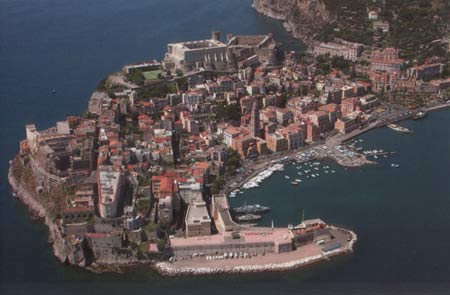
The city between two seas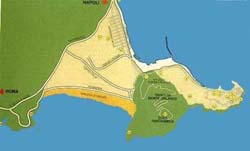
|
Itinerario - Storico- Monumentale
Gaeta is an ancient town. It was once a maritme Republic, the last rampart of the Bourbon monarchy. Gaeta is said to derive it's name from Cajeta, Aeneas foster mother who was buried there. This in recounted by Virgil in his Aeneid (book VII ). |
(as seen from Via G. Caboto)
A second possibility is that the name Gaeta originates from Kaiattas, meaning cavity or creek, as stated by the Greek historian, Stabone. During the Roman period Gaeta was a popular seaside resort and a port of some importance. In the Middle Ages it became an independent Dukedom governed by Ipatii or Dukes. |
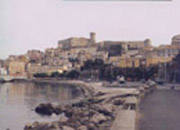
|
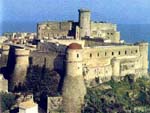 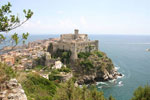
|
(formerly a prison)
Owing to its great military and strategical importance, the town was governed by many different rulers. Nevertheless, it was able to maintain its pride and the privileges it aquired as an indipendent dukedom. |
The Cathedral
The Cathedral consecrated by Pope Pasquale II in 1106 built upopn the pre-existing site af a 7th Century church. Originally in the Romanesque style, il was later rebuilt and enlarged in Baroque style in 1788. It still preserves works of art of great importance: Colonna del Cero Pasquale (13th Cent ); the Banner of the Battle of Lepanto (1571 now in the interior of the De Vio Palace ); and a Baptismal Font of the Canova School (18th Cent). Underneath the high altar there is a Crypt decorated with polychromatic marbles 18th Cent.) and frescoes by Giacinto Brandi.
The Campanile, whose summit is an octagonalshaped tower of clear Sicilian-Arabin ispiration, was built in the 12th century in the Romanesque and Moorish style |
Built in the 14th century, is preserves wirks of famous artists, such as Luca Giordano, Giacinto Brandi and Sebastiano Conca. Remarkable are, Enrico Caracciolo's Sarcophagus (15th cent.) which is richly engraved; the wooden Choir; and the Polyptych by Criscuolo (16th cent.) adorned by a marvellous wooden frame.
Church Annunziata
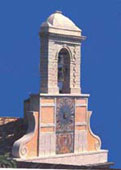 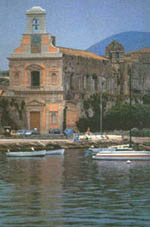 |
Enclosed in the church, is the Chapel of the Immacolata, called the " Grotta D' Oro " (Golden Chapel ) because of the rich decoration of the gold-plated caissoned ceiling and the gold-framed wall-plainting of exquisite workmanship by Scipione Pulsone and Giovan Filippo Criscuolo, both local artists of the 16th century.

|
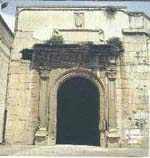
|
A land of artists, Gaeta owes its rich artistic patrimony to its rich and generous inhabitants. A great part of its heritage was preserved and saved from the destruction of the wars by those who treasured it, making the town famous as, the Venice ot the Thyrrebean Sea. |
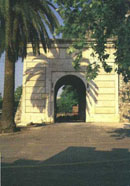
|
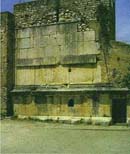 Sepolcreto Marittimo Sepolcreto Marittimo
|
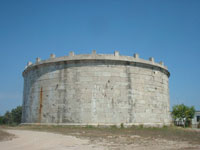
Mausoloe Lucio Munazio Planco
|
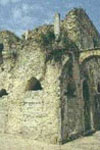
Resti del Palazzo di Docibile I |
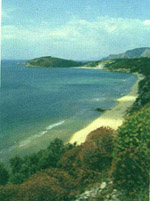 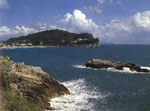
According to a legend, this is Ulysses ship which was converted into stone by the enchanttress Circe.Farther on is the famous Pozzo del Diavolo. All along the coast, on the Via Flacca, are the beaches of Quaranta Remi, Ariana, Arenauta still wild in its natural aspect, San Vito and St Agostino. Small fortified watch towers which are remains of Gaeta as a Maritime Republic, stand on the extremities of several pormontories jutting into the sea.
|
FALESIE and BEACH
Serapo Beach is one of the largest sandy beaches on the Lazio Coast set between the promontory of Mt. Orlando (Split Mountain )and Catena Hill. To the West, at the foot of cozy beaches of Villa Fontania with remains of ancient Roman villas. Along the coast the Nave di Serapo can be seen emerging from the blue water. |
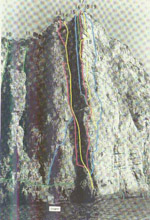 |
Today, Gaeta welcomes the tourist eager to know its natural beauties and its rich, historical, artistich and traditional patrimony, with distinguishing hospitality and the warm, solicitous frienship of its inhabitants.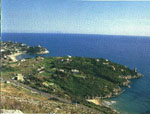
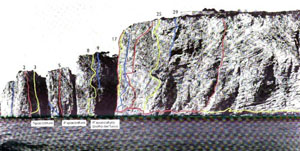
|
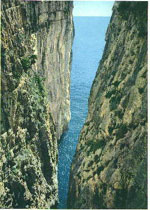 |
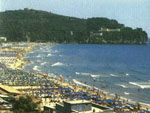
|
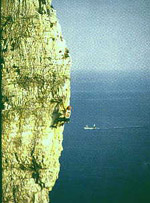 |
The Falesie of Gaeta have a special glamour for the arrampicatori. The feeling of the sea under the scarpette, the noise of the undertow, to them little familiar, leaves certainly a surrealistic feeling
 |
|
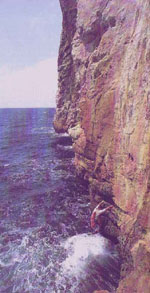 |
| The choice of varied roads (beyond 30), with the possibility of to vary of time in time the route and the degree of difficulty, give back these walls appetibili is to the professionals that to the free beginners of climb. |
| The roads can be reached from the sea with the boat, or on foot, following the road for the Polveriere. ( da Gaeta - Circeo SOTTOSOPRA) |
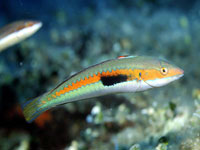 OASI BLU OASI BLU
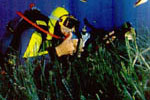
|
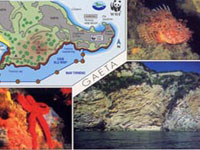
It is possible for the underwater to carry out attractive immersions, to visit caves and splendid vision backdrops (Cave of the Marshal, Cave of the Cefali, the Cigliata of 20 m., the Piers and Slipped it) as well as to photograph the numerous species of fish present Maidens, scorpion Fish, Mullets, Raven, and Bream.
They are present on the backdrops Spirografi, Stars of Sea, Marine Cavallucci and admire Lobster, Murene, Polyps and marvellous examples of Fin Nobilis (the larger bivalve of the Mediterranean one)
|
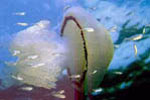
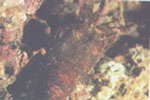 |
Parco Regionale Urbano
The Regional Park Urban of Mountain Bordering is born at the purpose of to protect a rich territory of values natural but also of historical and cultural resources. In fact in Roman age they had been built yourselves Mausolei and Villas, in the X sec the Sanctuary of the Trinit? (Mountain Spaccata), and from the XVI secolo absorbed in the Stronghold. |


|
More broadened, with Ferdinando the Catholic and Carlo V that closed the mountain aside dell' istmo, with Carlo II of Bourbon and its successors realized themselves the batteries, the polveriere, the casematte, the camminamenti, them it the that restive I am still present in the Park, with l' Italian Army than after 1860 built the Batteria Anulare (Ring Battery) all around to the Mausoleo Lucio Munazio Planco. |
Falco Pellegrino
 |
Fauna
The fauna is characterized above all for the presence of avifauna, is permanent that migratoria represented from Gulls, Rondoni, Ghiandaie, Upupe, Hawk fecchiaiolo, |
Gheppio
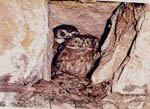 |
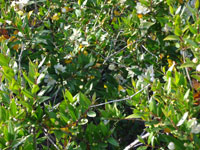
Mirto
|
Flora
The nature calcarea of the ground and the Military Servitude practically left the whole promontory, unattended nell' last century, allowing the wild development and incontaminato of a Mediterranean Blot sole and unrepeatable in its type. |
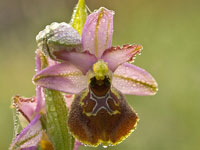
Ophrys tyrrhena (rara )
You show alone in little zones
isolated of the it costs Tyrrhenian |
|